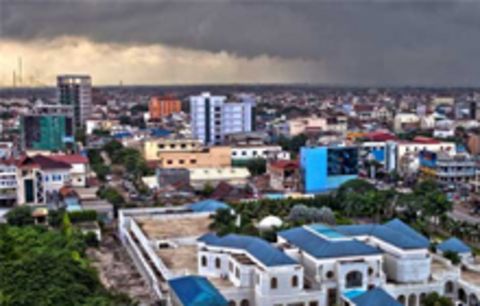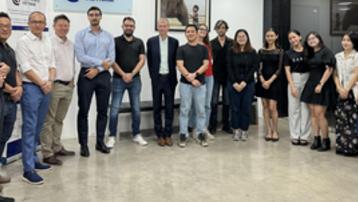Notre regard sur ...
Climate change and Asian cities: What does business need to do?

It now seems likely that we will not be able to keep future temperature rises below 2 degrees Celsius and mounting opinion is that those rises are more likely to be in excess of 3 degrees.
That has led scientists at the non-profit organisation Climate Central to estimate that 275 million people worldwide will be flooded out of their homes. Four out of five of those people affected live in Asia, including 17.5 million in Shanghai and 5.2 million people in Osaka, Japan.
When it comes to flooding, Shanghai is one of the world’s most vulnerable cities. Projections show the majority of the city could be submerged, including much of the downtown. The government is rapidly investing in new draining and sea walls, along with other water controls and dams.
Large part of of Osaka are also likely to be flooded and the commercial centre of Osaka with a GDP roughly equivalent to the Netherlands will disappear beneath rising water, threatening the local economy and many of the wider region’s 19 million residents.
Thus the costs of protecting cities from rising sea levels and weather related events are likely to be enormous, in addition to the inevitable costs of repairing mounting storm damage. There is a growing need to prepare now for the changing climate that will put many parts of Asia under water.
In addition to flooding, heat stress, drought and water scarcity, will pose risks in urban areas with those risks significantly higher for those lacking essential infrastructure or living in exposed areas. In addition, climate change will slow down economic growth, further erode food security, trigger new poverty traps and create hot spots of hunger.
This combination of a high-risk region and the special vulnerability of cities make Asian urban centres likely flashpoints for conflicts and hardship as the planet warms up. Smog produced by forest fires triggered by drought, are already choking cities across South-East Asia. In future, this problem is likely to get worse, as land dries up, vegetation dies and forests simply catch fire. Land losses, food shortages, water scarcity and ecological degradation associated with climate change is likely to generate a wave of environmental refugees.
Climate change throughout this century will lead to increases in ill-health in many regions. Examples include greater likelihood of death due to more intense heat waves and fires; increased likelihood of undernutrition resulting from diminished food production in poor regions; and increased risks from food-borne and water-borne diseases. The poor will be hot first and worst.
Ongoing scientific assessments makes it clear that climate change is having a growing impact around the world, and that the risks of catastrophic consequences increase every day as more greenhouse gases are pumped into the atmosphere. Much of the predictions made over the last decade are now irreversible. We have to prepare for the worst and there is a role for the private sector in engaging in climate change disaster preparedness initiatives and in resilience and disaster risk reduction.
There are four areas where businesses need to start getting prepared and make a contribution to mitigating the impact of climate change:
- Monitor, report, and verify greenhouse gas emissions. A first step is to build a greenhouse gas inventory, which helps a business understand its direct and indirect emissions and anticipate its exposure to new climate change policies. Measure and report on emissions from all operations, even in jurisdictions where there is no reporting requirement.
- Incorporate climate change into business strategy. Companies need top-level support for a comprehensive climate change strategy that leverages expertise across the company. It needs to address both mitigation and adaptation with an emphasis on identifying the major risks facing business over coming decades. The message is to act now in order to avoid costs in the future.
- Tackle risks and opportunities. Through risk reduction and ensuring long term investment decisions are future-proofed, companies can help to ensure their own survival in a rapidly changing world. By engaging in the policymaking process, companies can reduce uncertainty as well as identify business opportunities.
- Build knowledge and expertise early. Learn lessons from the past and anticipate the future. Make sure that the talent needed is being developed now. Increase knowledge of future carbon policies, anticipating increasing attention being given to the issue by a range of stakeholders in the future.
Source : CSR ASIA


